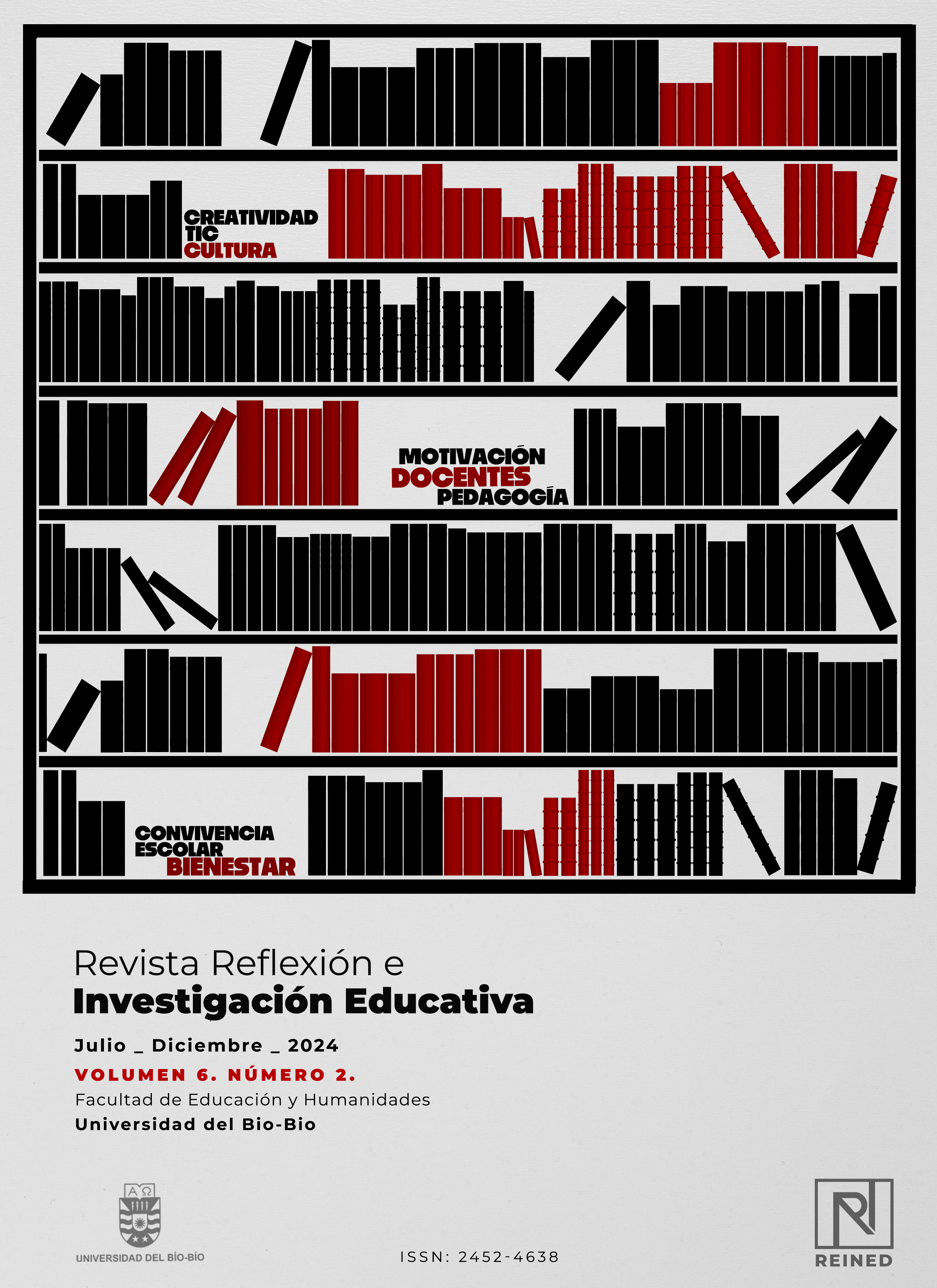RESCATE VIRTUAL Y PUESTA EN VALOR DE LA MEMORIA DE LOS TESOROS HUMANOS VIVOS DE LA REGIÓN DE ÑUBLE
Contenido principal del artículo
Resumen
Los Tesoros Humanos Vivos constituyen un valor cultural para la identidad de un pueblo, por lo cual es necesario su reconocimiento y rescate, lo que se ha transformado en una oportunidad para la academia y la Formación Inicial Docente. A partir de este escenario, se genera una experiencia pedagógica, con estudiantes de cuarto año de la carrera de Pedagogía en Historia y Geografía de la Universidad del Bío-Bío, en la asignatura de Historia Local, cuyo objetivo fue el rescate patrimonial configurado en una memoria virtual, mediante el diseño de una página web, para la puesta en valor de la memoria histórica de los tesoros humanos vivos, hombres y mujeres, del medio urbano y rural, con la finalidad de preservar la identidad cultural local. Considerando técnicas de investigación cualitativa se abordó la técnica de análisis de contenido de los componentes de la página web de los Tesoros de la Región de Ñuble, cuyos hallazgos relevan la importancia de visibilizar a los sujetos como actores culturales y las respectivas técnicas de oficios, como legado de conocimientos y habilidades transmitidas de generación en generación.
Detalles del artículo
Citas
Asencio, L. Y. G., Jaramillo, L. A. R., & Macas, D. F. J. (2021). El docente y la alfabetización digital en la educación del siglo XXI. Sociedad & Tecnología, 4(S2), 377-390. doi: https://doi.org/10.51247/st.v4iS2.158 DOI: https://doi.org/10.51247/st.v4iS2.158
Centro De Perfeccionamiento Experimentación e Investigaciones Pedagógicas (CPEIP) (2021). Estándares Pedagógicos y Disciplinarios para Carreras de Pedagogía en Historia, Geografía y Ciencias Sociales. Educación Media. https://estandaresdocentes.mineduc.cl/wp-content/uploads/2021/08/Historia-Media.pdf
Cruz de Amenábar, I., De la Taille, A., & Funtes, A. (2018). Cerámica perfumada de las monjas Clarisas. Desde Chile hacia el mundo. Oficios, terapéutica y consumo, siglos XVI.XX, Ediciones UC.
Graham, C. R. (2019). Essentials for blended learning: A standards-based guide. Routledge.
Maillard, C. (2012). Construcción social del patrimonio. En Daniela Marshall (Ed.) Hecho en Chile, reflexiones en torno al patrimonio cultural (pp. 15-32). Impresores.
Larraín, J. (2001). Identidad Chilena. Ediciones LOM.
Marshall, D. (2011). Hecho en Chile: Reflexiones en torno al patrimonio cultural. Andros Impresores.
Martínez, H. F. M., Rodríguez, J. G. P., & Arango, N. M. (2017). Divulgación y enseñanza del patrimonio: interpretación de contenidos digitales y las nuevas perspectivas educativas. Designia, 5(1), 48–66. https://doi.org/10.24267/22564004.253 DOI: https://doi.org/10.24267/22564004.253
Ministerio de las Culturas, las Artes y el Patrimonio. (2023). Atlas del patrimonio en Chile. Andros.
Montecino, S. (1986). Quinchamalí: reino de mujeres. Centro de Estudios de la Mujer CEM.
Nordenflych, J. (2018), Estudios patrimoniales. Ediciones UC, Santiago.
Onetto, M. (2017). Temblores de tierra en el jardín del Edén. Desastres, memoria e identidad. Chile, siglos XVI-XVIII. DIBAM, Santiago.
Oreste P. (2011). L´ANIMITA. Hagiografía Folclórica. Fondo de Cultura Económica.
Palacios, A. (2015). Entre ruinas y escombros. Los terremotos en Chile durante los siglos XVI al XIX. Ediciones Universitarias de Valparaíso.
Salinas, M. (2000). En el cielo están trillando. Editorial USACH, Santiago.
Salinas, M. (2005). Canto a lo divino y religión popular en Chile hacia 1900. Ediciones LOM, Santiago.
Sanfuentes, O. (2018). Historia pública y estudios del patrimonio, convergencias y divergencias para el caso del turismo cultural, En Nordenflycht (Ed.) Estudios Patrimoniales (pp.153-170). Ediciones Universidad Católica, Santiago de Chile.
Santacana, J., & Llonch, N. (2015). El patrimonio cultural inmaterial y su didáctica. Ediciones TREA, España.
Servicio Nacional de Patrimonio Cultural. (2019). Tesoros Humanos Vivos de Ñuble traspasan sus conocimientos en talleres. https://www.patrimonioinmaterial.gob.cl/noticias/tesoros-humanos-vivos-de-nuble-traspasan-sus-conocimientos-en-talleres
Undurraga, P. (2010). Investigación sobre Patrimonio e Identidades. Consejo de Ciudadanía Activa.
Valenzuela, J. (2014). Fiesta, rito y política. Del Chile Borbónico al Republicano. Centro de Estudios Barros Arana, Santiago de Chile.
Valenzuela, J. (2013). Las liturgias del poder. Celebraciones públicas y estrategias persuasivas en Chile Colonial (1609-1709). LOM, Santiago.

